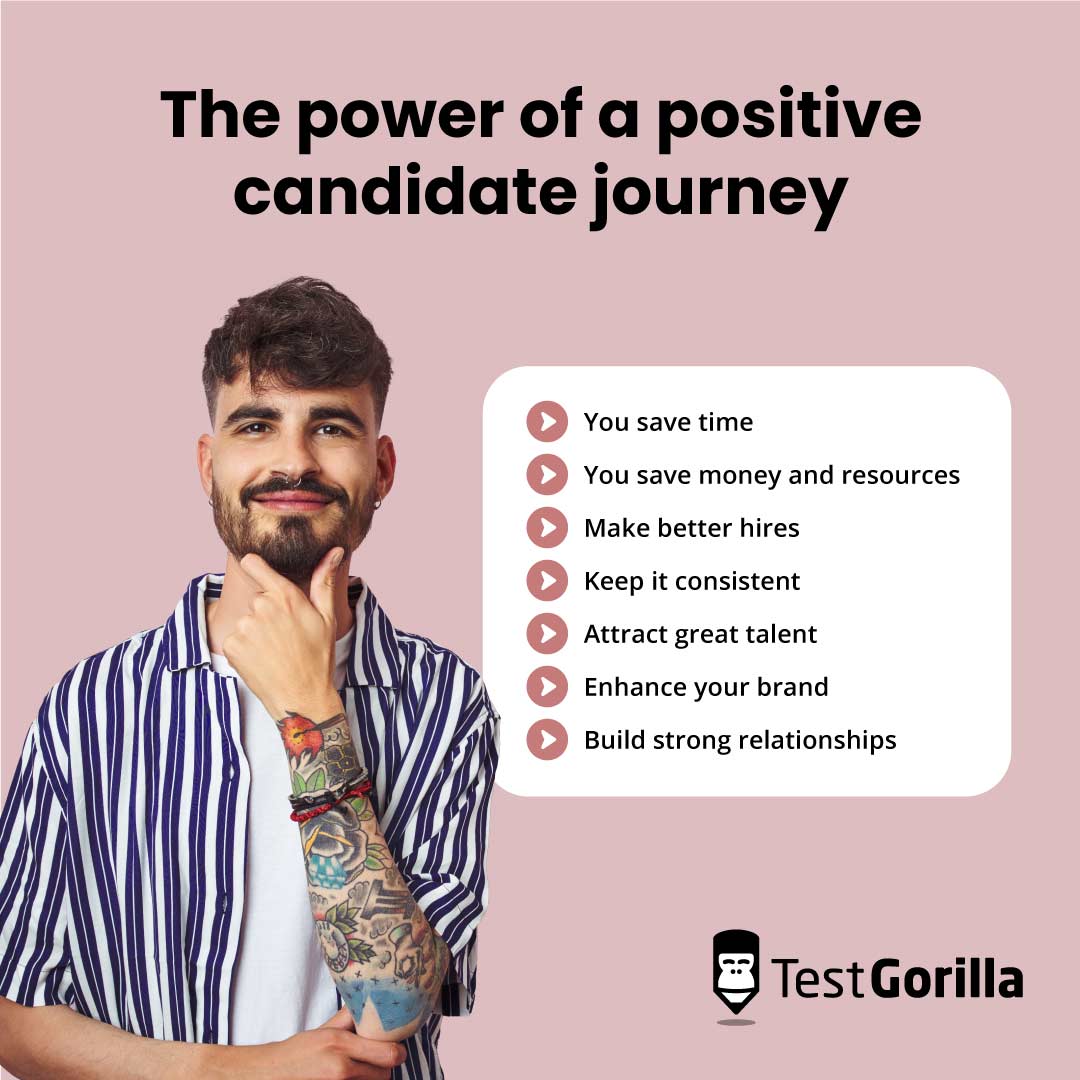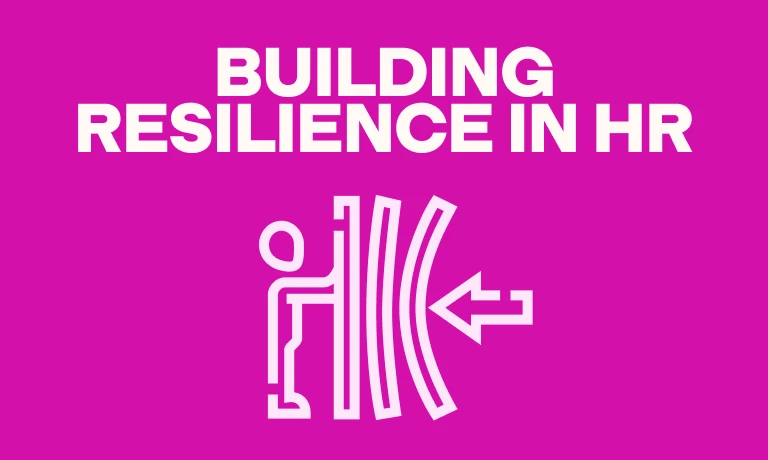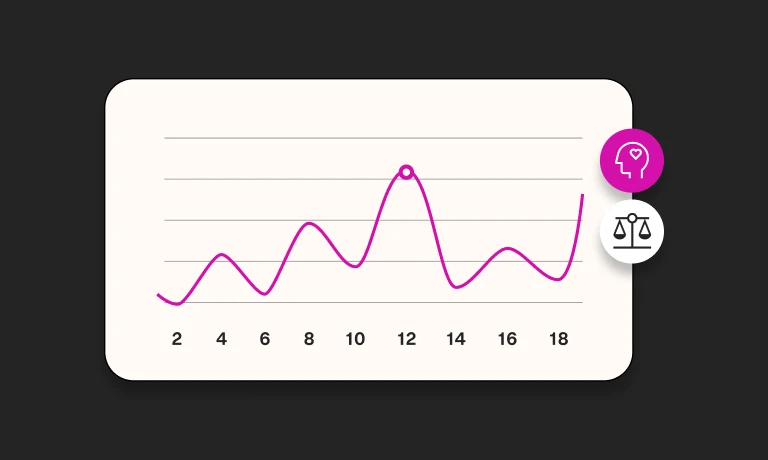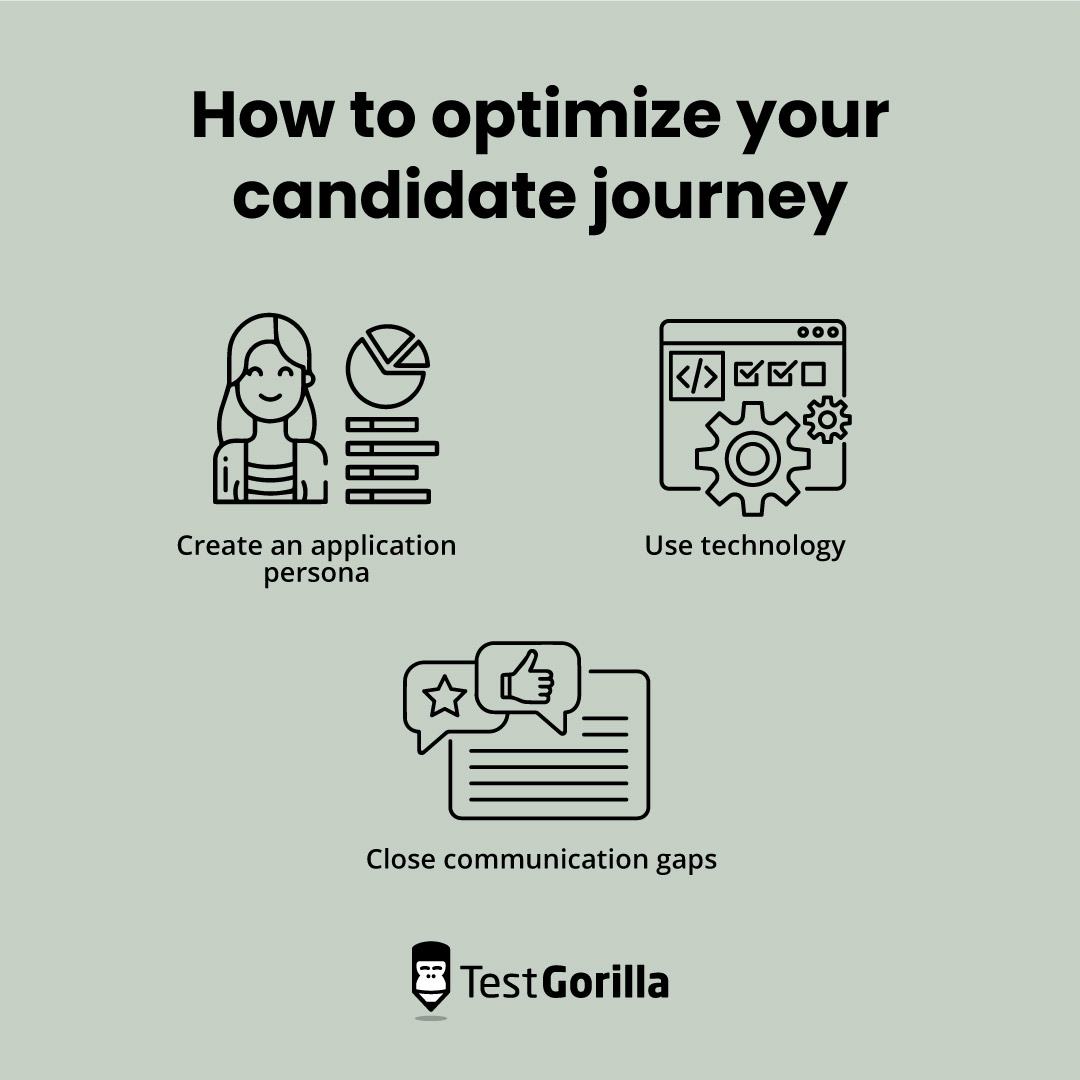When you’re hiring, you’re not just evaluating job candidates. They’re also appraising you.
A poor experience for applicants can result in a mis-hire, which can lead to the expensive process of re-hiring. It can hurt morale and productivity too.
Bad candidate experiences also hurt your company's reputation. Stories about poor recruitment and hiring experiences can even go viral online.
In this article, we’ll help you create a candidate journey that will keep applicants engaged at every step of the hiring process. We’ll also cover actionable suggestions you can try immediately to attract the best talent to your organization.
What is a candidate journey?
The candidate journey is the process job applicants go through when interacting with your company. It encompasses every interaction in person and online, from the moment a candidate first becomes aware of your company to the final hiring decision – and even beyond.
Most candidate journeys are defined by six steps: awareness, consideration, interest, application, selection, and hiring. We recommend adding a seventh step to gather data about the candidate experience, so you can keep updating your process.
Read on to find out more about each step a candidate takes – and how you can start creating the best experience for applicants.
Active vs passive candidate journeys
Candidates can be divided into two broad categories: active and passive. In an active candidate journey, individuals are actively seeking opportunities and job postings. Passive candidates are currently employed but may still be open to a new role.
The journey for each will be different. Active candidates may visit job fairs and see your job board posts because they’re actively looking. Passive candidates may require more effort and even direct contact to apply at your organization.
Tailoring your candidate journey to account for the behaviors of both types of applicants ensures you reach more talent and can address the job-seeking needs of each.
The power of a positive candidate journey
When you think carefully about all applicants’ experiences and work to create a system for hiring, you can:
Save time. A streamlined process can expedite hiring because you always know the next step to take. This also ensures nothing gets missed in the process.
Save money and resources. A great candidate experience helps you attract more applicants – who are also more likely to stay around for the whole hiring process. This gives you more quality choices and can save you the money and resources you’d lose on a mis-hire.
Make better hires. Candidate care paves the way for a stronger hiring process. With a consistent roadmap, hiring managers can gather more information about candidates, leading to more informed hiring decisions.
Keep it consistent. Instead of an ad hoc system where you post a job ad and hope for the best, creating a specific strategy ensures all candidates enjoy the same, positive experience.
Attract great talent. Top candidates have lots of opportunities. Making sure every interaction with your organization is positive gives these top applicants a reason to choose to work with you.
Enhance your brand. With a great experience, you can generate positive word-of-mouth and online reviews from candidates, which can impact how your company is perceived by both job seekers and potential customers.
Build strong relationships. A good experience is the beginning of a great working relationship. It starts you off on the right foot, whether you end up hiring the candidate or not. A positive candidate experience means that an unsuccessful applicant may go on to apply again or recommend you as an employer to someone they know.
The best insights on HR and recruitment, delivered to your inbox.
Biweekly updates. No spam. Unsubscribe any time.
The 7 steps of an effective candidate journey
Most companies define the candidate journey as having six steps – from awareness to hiring. Our experience finds that a seventh step enhances the process.
1. Awareness
First, you need to make your candidates aware of your organization as a great employer. Here are some examples of how you can create a positive impression.
Create a website that showcases your company's culture, values, and benefits.
Craft compelling job descriptions that accurately represent your organization and all the benefits of working with you.
Use methods to attract both passive and active candidates. For example, by announcing open roles on job boards and social media, and by asking for employee referrals.
Take part in trade shows and visit college campus events to build your brand by networking with people who may one day want to work for you.
2. Consideration
During this stage, candidates take a closer look at your company to see whether you’re an employer they’re interested in. Here’s how to keep applicants engaged:
Post on social media channels and engage with people who send positive comments and questions.
Keep your website updated with upcoming events and company news.
Assign one person to answer general email queries from potential candidates to make sure applicants get a prompt reply.
3. Interest
At this point, a candidate has decided to apply and they’re doing more in-depth research. They may be looking for vacancies at your company and talking to employees to understand you as an employer. There are a few ways to create a good impression.
Maintain good relationships with former employees, to ensure they paint a positive, accurate picture of what working at your company is like
Consider sharing “behind the scenes” video sneak peeks of your workplace on your website or social media
Include photos and short bios of your team on your website, if appropriate, so candidates can picture themselves at your workplace
Regularly check for and engage with reviews or comments made about your company online
4. Application
Candidates at this stage are sending in their resumes and cover letters. This can be nerve-wracking for applicants, so here are some tips you can use to help them feel valued.
Simplify the application process with pre-employment assessments that allow candidates to show their skills
Create a schedule to ensure you can review applications and get back to job-seekers in a reasonable timeframe
Provide timely, warm updates to candidates about the status of their applications
5. Selection
As you go through the process of choosing candidates, here’s how to keep this part fair and pleasant.
Conduct structured interviews to ensure consistency in candidate evaluation
Use assessments that include skills tests, behavioral assessments, and personality tests, to get a full picture of every candidate
Encourage candidates to ask questions throughout the applicant journey so they can learn more about your company culture and job expectations
6. Hiring
At this stage, you’ll hire your chosen candidate for the open position. Here’s how to make applicants feel confident they’ve made the right choice:
Present job offers clearly, outlining the compensation and benefits
Be open to negotiation when making a job offer
Explain your onboarding process for those who are hired, so candidates can see they’ll get the support they need
7. Review and action
Keep your applicant process up-to-date by reviewing it at least once a year. You may want to consider how many people are currently applying and what positions you’re hiring for.
As you find yourself hiring more – or fewer – people, or seeking to fill different roles than before, it’s useful to reevaluate your applicant journey. This helps ensure it still provides the best experience.
How to identify and assess your candidate journey
You already have steps you take when hiring someone new. Understanding your existing candidate journey helps you pinpoint areas for improvement. It also lets you create a hiring process based on what’s currently working. You don’t have to reinvent the wheel.
Map out your current applicant journey
Start by listing each step you tend to take in your current recruitment process, from the initial job posting to onboarding. Next, write down every interaction candidates have with your organization throughout the process.
Beside each step and interaction, write down the timeline of the average hire and the communication channels you use.
Gather data
Once you understand the shape of the current process, find out what is and isn’t working. Current employees are a great source of feedback. Ask them what they enjoyed about the hiring process and what would have elevated the experience.
You might want to use anonymous surveys to ask about specific pain points in the experience. This will free your employees to be honest, without worrying about hurting anyone’s feelings.
Talk to your hiring team too. Include any recruiters or external professionals you work with. What are their challenges and what have they noticed about candidate satisfaction? This can help you identify areas you can work on.
Next, take a look at the hard data, such as the time-to-fill, offer acceptance rate, and the number of applicants who failed to complete the application process. Note when candidate disengagement and drop-offs happened. This can help you pinpoint areas of your hiring process that need revision.
Research what others are doing
Talk to other companies in your field and read industry and recruiter publications. What tools are other companies and recruiters using right now? These can help you uncover any exciting options that can help improve your candidate journey.
How to optimize your candidate journey
Now that you have a sense of the steps of the candidate experience and have evaluated your process, here are some ideas for how to make applicants more engaged when applying for a job.
Create an application persona
Write out the needs, preferences, and expectations your target candidates may have. Think about what career goals, values, and preferred communication channels someone applying for your organization might have.
Look at the persona you’ve created. Try to imagine what type of communication fits your ideal talent. Would they prefer efficient emails or phone calls? Think about what steps your ideal candidate might appreciate. For example, would they thrive in interviews or prefer online assessments?
By thinking about what your applicants need, you can start shaping the experience to create a welcoming journey to “hired!”
Use technology
Tech can help you close communication gaps and streamline the application process. The following types of technology can also have accessibility features that enhance the candidate experience for everyone:
Applicant tracking systems automate parts of your hiring process and prompt you when you need to reply to candidates
Chatbots can provide mobile-friendly, real-time responses to candidates
Pre-employment assessments evaluate job-specific skills, personality, cognitive abilities, and more while eliminating human bias
One-way video interviews let candidates reply to interview questions without needing to attend in-person
TestGorilla is a powerful resource for companies. With a library of more than 300 scientifically validated tests, it’s easy to put together a complete pre-employment assessment in minutes.
One-way interviews make it simple to ask your own custom question and see an applicant’s communication style.
Tech support is available for candidates and assessments can be completed in minutes on any mobile device, creating a pleasant assessment experience.
With TestGorilla you get a full report about each candidate too, so you can easily track your top talent and share your hiring insights with your team.
TestGorilla also has a free guide with more ideas about how to create a positive experience for every candidate.
Close communication gaps
Candidates put a lot of effort into their applications and you can honor this by providing updates at multiple stages of the process. Applicants should never wonder if they’re still in the running or when they can expect to hear back from you.
Provide feedback too. Successful candidates may appreciate hearing what they got right.
Those who didn’t get hired can benefit from kind, constructive feedback as they continue their job search. They will also appreciate hearing what impressed your hiring team.
In either case, demonstrate appreciation for the time and effort candidates invest. Use a warm tone and always reply with personalized notes rather than generic email templates. It only takes a few seconds to add a personal note, but it shows you value each applicant.
Improve the candidate journey with TestGorilla
The roadmap to hiring is not just about filling a job opening. It's about creating meaningful connections with potential employees and setting the stage for long-term success within the organization.
Creating a seamless candidate experience can build a strong employer brand, attract the right candidates, and ultimately help you make better hiring decisions.
You can start building a better candidate journey today with TestGorilla while honoring your company’s need for better candidate data. TestGorilla gives applicants a way to demonstrate their fitness for your role through short online assessments they can complete on their mobile devices.
Take a product tour of TestGorilla now to see how this tech can transform your candidates’ experience.
You've scrolled this far
Why not try TestGorilla for free, and see what happens when you put skills first.
















